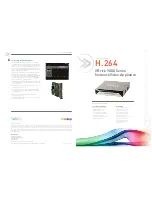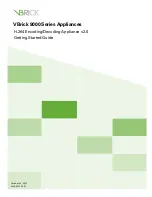
81
CHAPTER 7: Peripheral Pass-Thru Operation
7.3.2 C
ONTROLLED
B
US
D
ATA
T
RANSFERS
If the controller must avoid waiting for the serial device, it can “serial-poll” the 488 Controller. Serial poll is a
method by which the controller can inquire the internal status of the interface without disturbing any data
being transferred, slowing data transfers or locking up the bus. You should refer to the programming
manual of your controller to determine the method of performing serial polls.
When serial polled, the 488 Controller provides eight bits of status information to the controller. The most
significant bit (DIO8) of the 488 Controller’s serial-poll byte is set to a logical “1” when the IEEE input
buffer is NOT EMPTY. The term NOT EMPTY is used to signify that not all of the previous data sent to the
interface has been transmitted to the serial device. If it is NOT EMPTY, the controller may avoid sending any
more data to the 488 Controller. If this bit is a logical “0,” then the serial device has accepted all previous
data and the IEEE controller may send more.
Another bit (DIO4) of the serial-poll byte is used to indicate additional information concerning the IEEE
input buffer. This bit is set to a logical “1” when there are 1280 or fewer locations in the buffer for data. It is
cleared, set to a logical “0,” when there are more than 1280 locations available. This bit is referred to as the
IEEE input buffer FULL bit.
When serial data is received, DIO5 of the serial-poll byte is set, “1,” to indicate to the IEEE controller that
the serial input buffer is NOT EMPTY. If set, it indicates that at least one character is available in the serial
input buffer to be read by the IEEE controller. Once all of the serial input data is read by the IEEE
controller this bit is reset.
The 488 Controller can generate a request for service on the bus when it receives the last serial terminator.
To enable this feature, the Pass-Thru Feature switch, located on the internal switch bank of SWl, must be set
to open. When enabled, the 488 Controller will assert the IEEE bus SRQ line and set serial-poll status bits
DIO7 and DIO3 when the last serial terminator is detected. The IEEE controller must perform a serial poll
on the interface to clear the SRQ. If the Pass-Thru Feature switch is in the closed position, there will not be
any indication in the serial-poll status byte that a serial terminator has been received.
Figure 7-1. SW1 view for selecting SRQ on last terminator.
Switch
Side
View
DOT
1 2 3 4 5 6 7 8
OPEN
SRQ on Last
Terminator Enabled
1 2 3 4 5 6 7 8
OPEN
SRQ on Last
Terminator Disabled















































